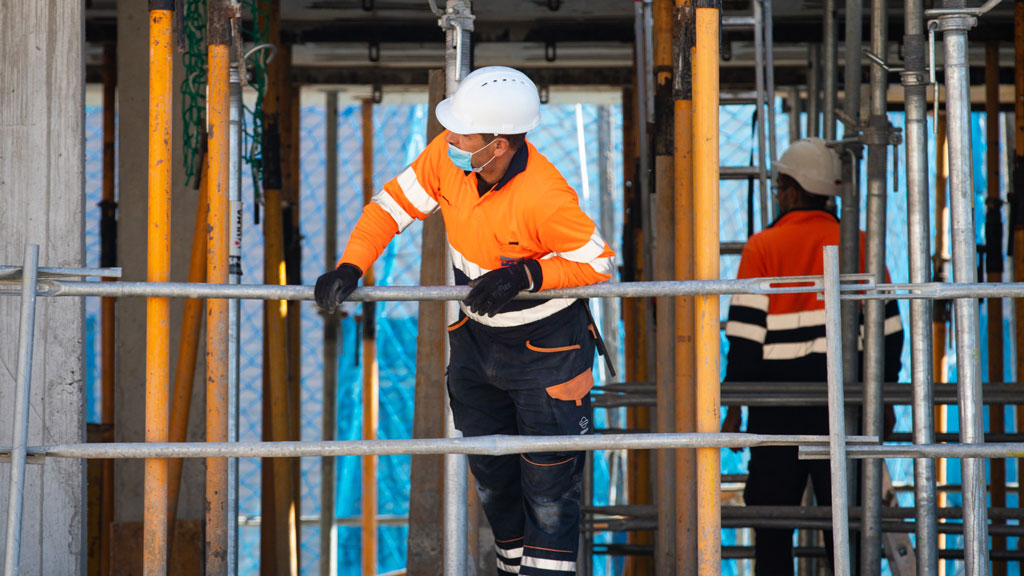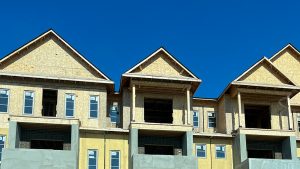Ontario’s contractor community is facing a major challenge.
Prices for homebuilding materials like lumber and steel are going through the roof. There is no real end in sight.
Softwood lumber costs have skyrocketed while steel prices are still climbing. Prices for concrete have been less volatile but have shown a steady rise.
Wood prices have risen for a variety of reasons.
Sawmills in Quebec were shut down due to COVID-19 and demand is up because the economy is steadily improving and many Canadians are doing home improvements. Many homeowners are also moving from cities to lower-density situations in rural areas, so they need more new housing. A pine beetle infestation in B.C. also hasn’t helped.
According to Madison’s Lumber Reporter, the price of two-by-fours made from Western spruce, pine and fir have gone up 340 per cent since mid-May 2020.
Steel and rebar prices, meanwhile, are up more than 60 per cent since early 2020, driven in large part by the fact production was reduced due to uncertainty in the global economy from COVID-19.
Homebuilders are also getting hit by a string of supply chain disruptions, which are putting projects months behind schedule and only adding to the cost of new homes.
The big freeze in Texas, for example, where the electrical grid collapsed in February affected a Daikin Industries Ltd. manufacturing plant outside Houston which makes nearly every Goodman, Daikin and Amana air-conditioner sold in North America. Heating and cooling units became even more scarce as it triggered the larger builders and trades to begin stockpiling and surging typical orders.
Altus Group indicates construction costs for residential towers in Toronto are expected to surpass other Canadian cities, with an estimated overall increase of up to six per cent this year. Cost of building a highrise in Toronto is expected to be between $315 and $380 per square foot in the GTA in 2021, second only to Vancouver.
This is all leading to higher prices for new homes, of course. In Canada, the average price of a home is expected to hit $620,000 this year — a 9.1-per-cent increase over 2020. New home prices are rising at their fastest pace in more than 30 years, according to Statistics Canada.
In Toronto, the average price of a two-bedroom home is now $1.1 million, up 21 per cent from a year ago.
Apart from supply chain issues, though, there is another often-overlooked reason for the higher prices, and that is the labyrinth of approvals that must be navigated before shovels go in the ground. The delays cost money and this is passed on to consumers by way of higher prices for housing.
The C.D. Howe Institute recently released a report that concluded restrictions and extra costs on building new housing — like zoning regulations, delays on permit approvals, development charges and limits on greenfield housing development — are dramatically increasing the price of developments.
The report suggested the barriers to building add a whopping $168,000 to the average cost of $751,000 for a single-detached home in Toronto, or 22 per cent of the cost.
A main reason for the increase in price for a single-detached home in Toronto, according to the report, is the high rate of subjecting such applications to a zoning review. If the zoning review rate was reduced to the provincial average, the price of a single-detached home would dip by $27,000.
The report found slashing development and zoning costs in half would result in a price reduction of more than $80,000 for a single-detached dwelling in York Region and nearly $75,000 in Toronto.
There is clearly room for improvement when it comes to dealing with construction permits. Canada, which is represented by Toronto, is ranked 64th in the world when it comes to these permits.
RESCON and many other industry partners have teamed up with AECO Innovation Lab on the One Ontario project to develop data exchange standards that could be used to set the stage to expand the use of an e-permitting system that would speed-up the development approvals process for housing.
Streamlining the system would boost our recovery and enable the building of much-needed new housing units.
Unfortunately, a new housing report by Scotiabank paints a very bleak picture for the supply of new homes.
Canada has the lowest number of housing units per 1,000 residents of any G7 country, with 424 homes per 1,000 Canadians. Presently, it would take an additional 1.8 million homes for Canada to match the G7 average of 471, 250,000 homes to catch up to the U.K. average of 433 units per 1,000 citizens, and 99,000 homes to catch up to the U.S. average of 427 units per 1,000 citizens.
Housing construction has not kept up with demand, the report concluded. When looking at international comparisons, the shortage of supply is even more evident.
We are hopeful that the storm clouds of COVID-19 will depart, materials prices will decline and certainty will return to our industry. In the meantime, we must tackle the approvals process.
Grant Cameron is senior director of public affairs at the Residential Construction Council of Ontario. Please send Industry Perspectives comments and column ideas to editor@dailycommercialnews.com.











Recent Comments